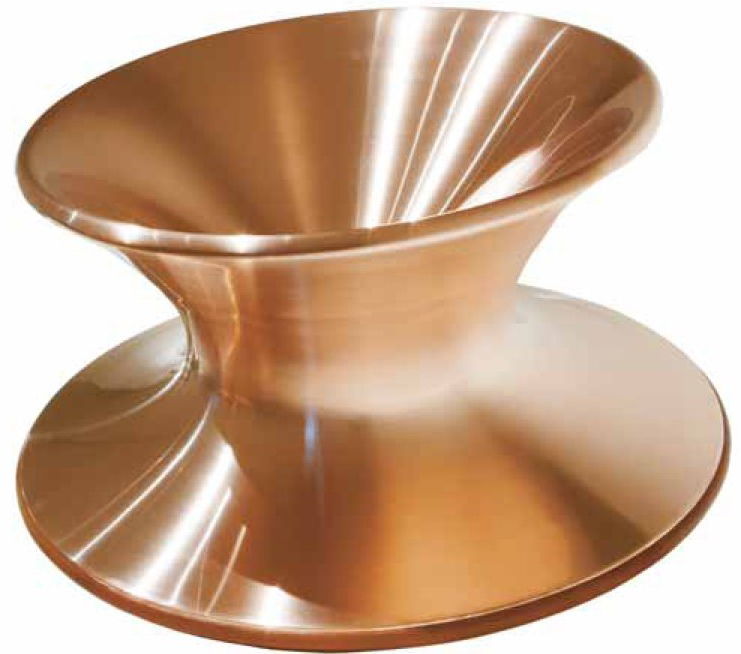Copper is characterized by its rich, auburn colour, which perhaps does not fit with contemporary visual language trends, where technology increasingly requires brighter, whiter metals. However, from a cultural perspective, copper has been instrumental in many aspects of human evolution since it was first used, approximately 10,000 years ago.
Copper’s versatility is demonstrated in many of the elements that humans need to survive: food, power, shelter and water. It is of such importance that in the periods of history when materials were used to define human evolution it had its own period, the Chalcolithic period, a phase of the Bronze Age. However, one of the beautiful things about copper is that it’s a raw ingredient, which, through pairing with other metals, can be tailored to specific properties for far reaching applications. For example, blending it with tin will give you bronze and blending it with zinc will give you brass. Beyond that, it can be mixed with nickel, beryllium and aluminium to provide other variations of copper. This versatility and the fact that it leads to over 400 alloys gives an understanding that copper is close to having its own material family.
Today, one of the major uses of copper is as an electrical conductor. Along with silver, copper has by far the highest thermal conductivity rating – the speed at which heat or cold are transmitted through a material – of any material, the main reason it feels cold to the touch.
Image: Spun Chair, Thomas Heatherwick

•Good resistance to corrosion
•Ductile and malleable so easy to work
•Excellent electrical and thermal conductor
•Tough
•Alloys well with other metals
•Antimicrobial
•Capable of good surface finish
•Recyclable
Sources
Although copper can be found freely in nature, the most important sources are the minerals cuprite, malachite, azurite, chalcopyrite and bornite. Approximately 90% of the world’s primary copper originates in sulphide ores. Major sources of copper are Chile and China.
Cost
£4.50 ($7) per kg.
Sustainability issues
Its usefulness and proliferation are largely due to the ease with which it can be mined and separated from its ores. Copper deposits are found far and wide in the environment due to the ease with which it attaches to organic matter and minerals. According to the US Geological Survey in 2011, world production of copper amounted to approximately 16 million tonnes a year and exploitable reserves stood at around 690 million tonnes.
Production
Copper is a great material for casting due to its low viscosity, which allows it to flow into complex shapes with fine details. It can be cast using various methods including sand and die-casting. It can also be forged, extruded, applied as a coating using electrolysis and is readily available in sheets, rods, strips and solid forms where it can be die-stamped, rolled, press-formed and machined.
Typical applications
It is impossible to list all the areas for which copper has been used, but they include roofing, wire for carrying electricity and motor windings, carrying water, cooking and jewellery. It is also the basis for brass and bronze. One of the most interesting applications might be the use of copper fibres in socks, where it is used to reduce odours due to its antimicrobial properties.
Derivatives
—Gunmetal
—Copper-Nickel
—Non-electrical copper
—Machining copper
—High strength alloys
—Electrical copper
| + | – |
|
–Versatile –Excellent finish –Tough –Excellent electrical and thermal conductor –Recyclable |
–Like brass, copper can suffer from old-fashioned associations |
